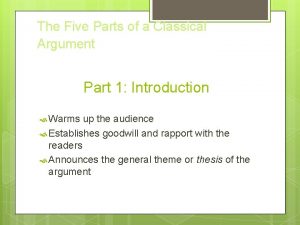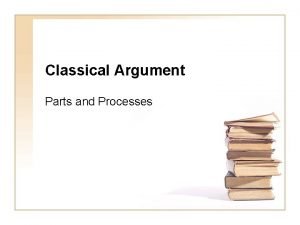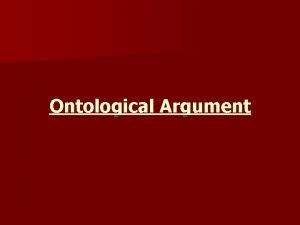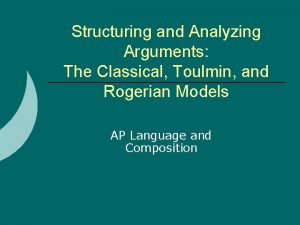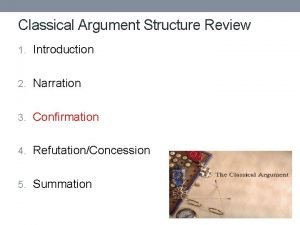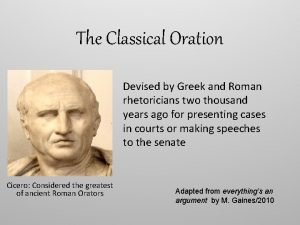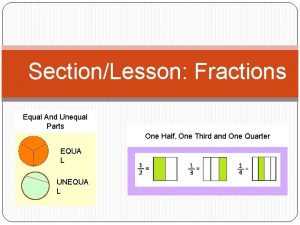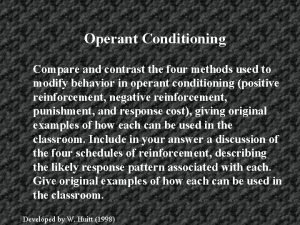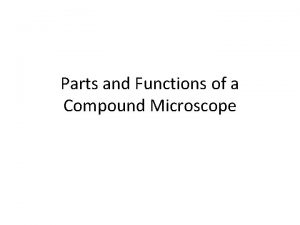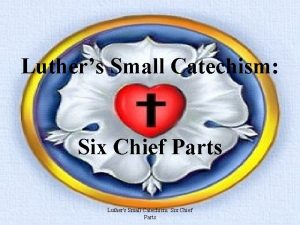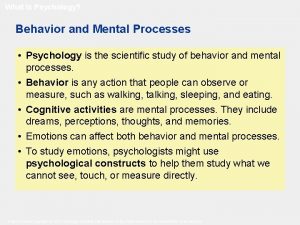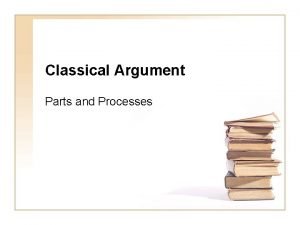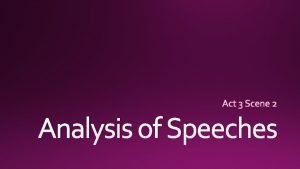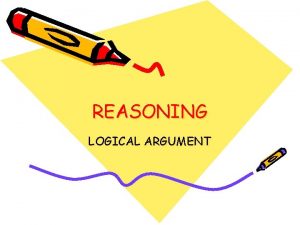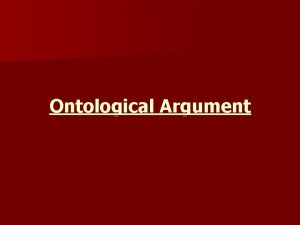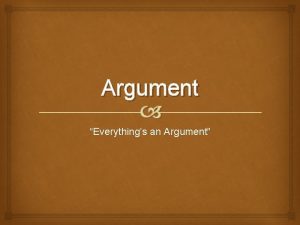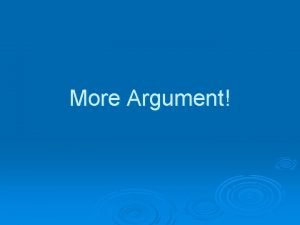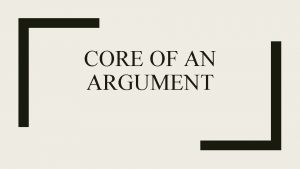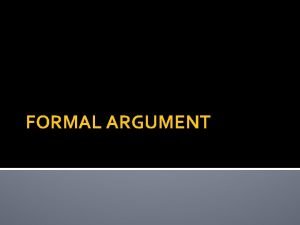Classical Argument Parts and Processes What is it













- Slides: 13

Classical Argument Parts and Processes

What is it? • One of the oldest known forms for making an argument (Greeks, 5 th century BC) • A series of steps to make sure you’ve covered everything you need to build a solid argument. • Does not guarantee a perfect argument, but can help give your paper structure and make sure you’ve covered your bases.

Five-part Process 1. 2. 3. 4. 5. Introduction Narration/Background Confirmation/Claim Concession/Refutation Conclusion

Five-part Process (cont’d) • Concession and Refutation – Concedes valid points of the opposition (as much as possible without damaging thesis) and offers refutations to arguments for the other side. • Conclusion – Wraps up argument, summarizes points, and strengthens the argument with a final plea or reinforcement of points made.

Introduction/Narration • Two parts often run together in writing. • Attracts interest to the subject. • Provides necessary background so that readers can understand your topic. • Ends with your claim and reasons supporting your claim. (thesis statement)

Questions for Introduction/Narration • How do I get the audience’s attention? • What background/context is needed to understand the topic? • What or who are the principal issues involved? • Have I established my stance?

Confirmation/Claim • Gives subtopics of your claim. These are your “reasons” • Provides various support for your side of the argument. – Facts – Examples Research – Anecdotes • Shows how this support is actually connected to thesis. • Follows organizational structure (SEE sets)

Questions for Confirmation • What are the subclaims of my argument? • What evidence can I use to support my subclaims? • How can I relate this evidence back to my overall claim? • Is my evidence valid and persuasive? • Do my explanations state the significance of the evidence?

Concession/Refutation • Looks at opposing viewpoints to the writer’s claims. • Anticipates objections from the audience. • Allows as much of the opposing viewpoints as possible without weakening thesis. • Shows that you are considering both sides – gives balance.

Questions for Concession/Refutation • What are the most important opposing arguments? • How much can I concede without weakening my argument? • What is the best way to refute opposition arguments?

Conclusion • Often the hardest part to write effectively. • Step back a little – look at the whole again. • Show why a solution to the argument is important, and why yours is the best. • Show the possible benefits of accepting your solution/side. • Don’t leave them hanging – last chance to leave an impression. • Don’t just restate.

Questions for Conclusion • How can I best leave a strong final impression of rightness/importance? • How can I best summarize/exemplify my most important arguments? • What is the larger significance of my argument? • What are the long-range implications? • How can I bring things full circle and leave my audience satisfied?

The End Power. Point by William Folden Adapted from web presentation by Dr. Josephine Koster of material from Real Writing (2 nd Edition) by Walter Beale (1986).
 What are the five parts of the classical argument in order
What are the five parts of the classical argument in order Parts of a classical argument
Parts of a classical argument Concurrent in os
Concurrent in os Anselm argument for god
Anselm argument for god Toulmin vs classical argument
Toulmin vs classical argument Classical argument definition
Classical argument definition Refutario
Refutario Parts of classical oration
Parts of classical oration What is equal to one half
What is equal to one half Compare and contrast operant and classical conditioning
Compare and contrast operant and classical conditioning Optional element in letter writing
Optional element in letter writing Dust shield of microscope
Dust shield of microscope 6 chief parts of luther's small catechism
6 chief parts of luther's small catechism Study of behavior and mental processes
Study of behavior and mental processes
